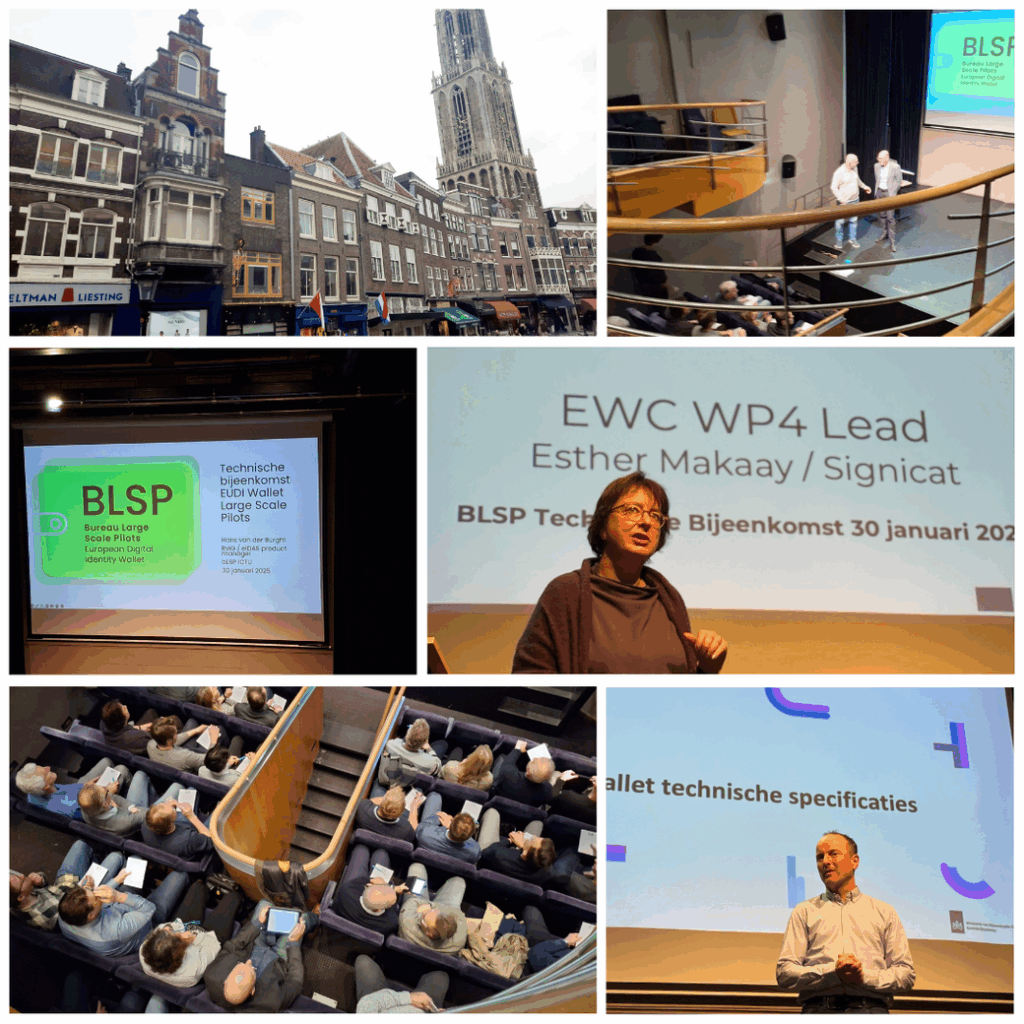On January 30th, 2025, the Dutch national coordination agency for the Large-Scale Pilots (BLSP) hosted a technical meeting with representatives from the POTENTIAL, EWC, and DC4EU projects, alongside experts from the Dutch Wallet Provider. The objective: share insights into the technical architecture and development decisions made during the first wave of EUDI Wallet pilots and assess their impact on interoperability and future deployment.
Shared constraints and diverging approaches
All participating projects faced similar challenges at the start: the Architecture Reference Framework (ARF) and Reference Implementations were delivered late, and key documentation was lacking in detail. As a result, each project adopted different technical strategies.
For example:
- EWC made early decisions to avoid delays and moved forward independently.
- POTENTIAL opted to wait for the ARF, while preparing in parallel.
- DC4EU based its work on EBSI components, which introduced additional complexity.
- The Dutch Wallet had already begun implementation before the ARF was available, with many technical choices already in place.
These different paths have led to varying interpretations and implementations of key standards such as OID4VCI, SD-JWT, and multiple ISO norms. They also affected the development of trust models and PID structures, which are central to identity verification.
Interoperability: still a work in progress
While all projects align with the shared goal of building secure and interoperable EUDI Wallet solutions, technical divergence has created real challenges. Differences in versions, scope of implementation, and national approaches limit the ability of solutions to work seamlessly together.
The pilots have shown that cross-border credential exchange is possible, but a significant harmonisation effort is still needed to meet the ambitions of eIDAS 2. Aligning on standards, improving documentation, and sharing lessons learned will be key to reducing fragmentation in future phases.

Preparing for the next wave of pilots
A new series of LSPs is expected to launch in autumn 2025. The meeting emphasised the importance of capitalising on the progress and experience from current projects. As Ard van der Heijden and Hans van der Burght (BLSP, POTENTIAL Use Case 1) noted: “It makes sense to do some ‘cherry-picking’ from the results of all the projects, when forming the foundation of the new series of LSPs”. “Also we must ensure that the results find their way to the implementation of the Dutch wallet”.
Knowledge-sharing activities will continue throughout 2025 to ensure the lessons from LSPs are transferred to the national implementations of eIDAS 2. A follow-up meeting is planned to identify which technical components may be adopted within the Dutch Wallet architecture.
